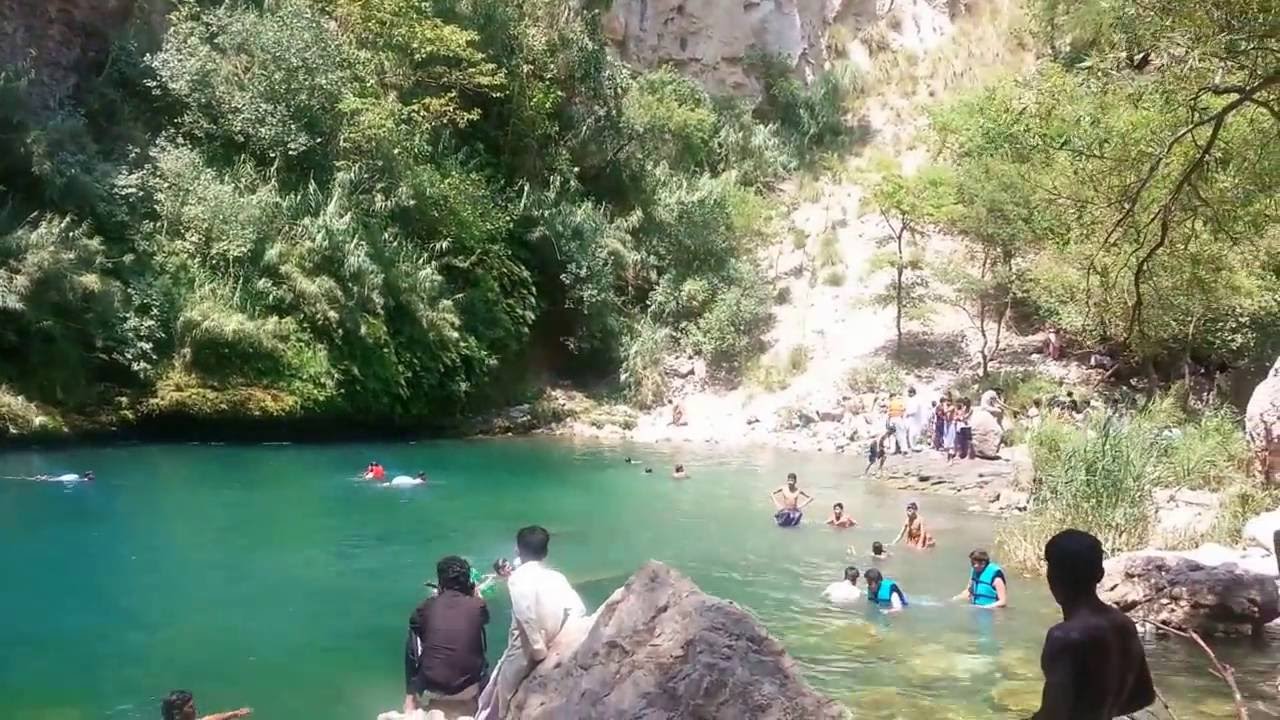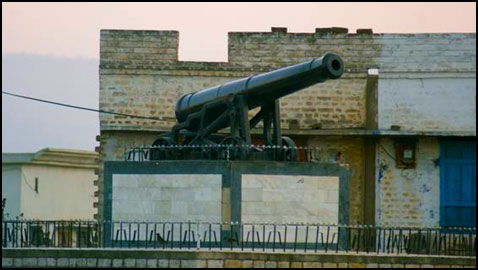How to install the app on iOS
Follow along with the video below to see how to install our site as a web app on your home screen.
Note: This feature may not be available in some browsers.
You are using an out of date browser. It may not display this or other websites correctly.
You should upgrade or use an alternative browser.
You should upgrade or use an alternative browser.
Chakwal in picture
- Thread starter ghazi52
- Start date
ghazi52
PDF THINK TANK: ANALYST

- Joined
- Mar 21, 2007
- Messages
- 101,758
- Reaction score
- 106
- Country
- Location
Katas Raj Mandir

(Swaik Lake ) Kallar Kahar Tehsil .District Chakwal

Khudadad Khan – South Asia’s first recipient of the Victoria Cross

KHUDADAD KHAN (1888- 1971)
A striking oil portrait on canvas of Khudadad Khan, by Hal Bevan Petman (c1935) is one of the collections at the National Army Museum, London. He was the first South Asian and Muslim to receive the Victoria Cross. The highest military award for gallantry in the face of the enemy. Indian troops were first made eligible for the Victoria Cross in 1911, prior to this they were awarded the Indian Order of Merit. Here I explore the history of this great soldier.
Khudadad Khan was born on 20.10.1888 in Dab village, Chakwal, in present day Pakistan. He was a Muslim of Rajput descent. He went on to serve as a Sepoy (Private) in the 129th Duke of Connaught’s Own Baluchis battalion, as a machine gunner.

(Swaik Lake ) Kallar Kahar Tehsil .District Chakwal

Khudadad Khan – South Asia’s first recipient of the Victoria Cross

KHUDADAD KHAN (1888- 1971)
A striking oil portrait on canvas of Khudadad Khan, by Hal Bevan Petman (c1935) is one of the collections at the National Army Museum, London. He was the first South Asian and Muslim to receive the Victoria Cross. The highest military award for gallantry in the face of the enemy. Indian troops were first made eligible for the Victoria Cross in 1911, prior to this they were awarded the Indian Order of Merit. Here I explore the history of this great soldier.
Khudadad Khan was born on 20.10.1888 in Dab village, Chakwal, in present day Pakistan. He was a Muslim of Rajput descent. He went on to serve as a Sepoy (Private) in the 129th Duke of Connaught’s Own Baluchis battalion, as a machine gunner.
ghazi52
PDF THINK TANK: ANALYST

- Joined
- Mar 21, 2007
- Messages
- 101,758
- Reaction score
- 106
- Country
- Location
Dulmial, Pakistan- ‘The Village with the Gun’

A nineteenth century cannon sits at the centre of a Pakistani village. Here we take a look at the story of the Dulmial Gun.
Dulmial is a village approximately 100 miles south of Islamabad, in the Salt Range region. A century ago, the area was part of British India, which meant that its inhabitants were drawn into the Great War on the side of the Allies. A settlement stepped in military history, Dulmial sent 460 of its men to fight in the British Army, including both of my great grandfathers. The largest single participation of any village in Asia. Nine sacrificed their lives.
In recognition of the significant military service and sacrifice, in 1925 the British Government offered Dulmial an award of their choosing. The man in charge of choosing was Captain Ghulam Mohammad Malik, the highest ranking and most decorated soldier of the village. The Captain was a man of great experience, having commenced his military life in the Derajet Mountain Battery and participated in Lord Robert’s famous march from Kabul to Kandahar in 1880. His photograph and achievements are documented in the book by Brig.Gen. Graham ‘The History of the Indian Mountain Artillery’ in 1957.A career soldier, he eschewed the British offers of land, money and water facilities, choosing instead to have Dulmial’s contribution recognised with the presentation of a cannon.
The British agreed to this selection and provided Dulmial with a twelve pounder. The cannon itself was made at Carron ironworks, in Falkirk, Scotland in 1816. It’s stand was built in Cossipore Gun Foundry, India under the leadership of Captain A. Broome, in 1847. The gun was first collected from the First Punjab Regimental Centre in Jhelum, from where it was carried by train to Chakwal. There the gun was dismounted and loaded in a cart to be pulled by three pairs of oxen for the remaining 28 kms. The roads were semi-mountainous and the passage was difficult. It would take the ox carts 2 weeks to cover the distance. From 5 kms out, at Choa Saiden Shah, the route became more difficult still and Dulmial had to dispatch 5 additional pairs of oxen to relieve the initial 6 and complete the gun’s journey.
Safely in Dulmial, the gun was place at the centre of the village and a photograph taken with the local commissioned officers. It remains there today, a reminder of the contribution that Dulmial made in the First World War.
Dulmial is now known within Pakistan as the ‘village with the gun’, but is rather less well known in the UK. This is because little has been written or published about the village in English. I in collaboration with Michael Noble, The Centre for Hidden Histories, University of Nottingham aim to research the First World War history of the village as it played such an impressive part during that period. Since that time Dulmial has continued to produce many generations of high ranking, distinguished Army officers. It is our intention to bring this hidden history to a wider audience and help to share the reasons of just what a nineteenth century Scottish cannon is doing in the Salt Range region of Pakistan.

A nineteenth century cannon sits at the centre of a Pakistani village. Here we take a look at the story of the Dulmial Gun.
Dulmial is a village approximately 100 miles south of Islamabad, in the Salt Range region. A century ago, the area was part of British India, which meant that its inhabitants were drawn into the Great War on the side of the Allies. A settlement stepped in military history, Dulmial sent 460 of its men to fight in the British Army, including both of my great grandfathers. The largest single participation of any village in Asia. Nine sacrificed their lives.
In recognition of the significant military service and sacrifice, in 1925 the British Government offered Dulmial an award of their choosing. The man in charge of choosing was Captain Ghulam Mohammad Malik, the highest ranking and most decorated soldier of the village. The Captain was a man of great experience, having commenced his military life in the Derajet Mountain Battery and participated in Lord Robert’s famous march from Kabul to Kandahar in 1880. His photograph and achievements are documented in the book by Brig.Gen. Graham ‘The History of the Indian Mountain Artillery’ in 1957.A career soldier, he eschewed the British offers of land, money and water facilities, choosing instead to have Dulmial’s contribution recognised with the presentation of a cannon.
The British agreed to this selection and provided Dulmial with a twelve pounder. The cannon itself was made at Carron ironworks, in Falkirk, Scotland in 1816. It’s stand was built in Cossipore Gun Foundry, India under the leadership of Captain A. Broome, in 1847. The gun was first collected from the First Punjab Regimental Centre in Jhelum, from where it was carried by train to Chakwal. There the gun was dismounted and loaded in a cart to be pulled by three pairs of oxen for the remaining 28 kms. The roads were semi-mountainous and the passage was difficult. It would take the ox carts 2 weeks to cover the distance. From 5 kms out, at Choa Saiden Shah, the route became more difficult still and Dulmial had to dispatch 5 additional pairs of oxen to relieve the initial 6 and complete the gun’s journey.
Safely in Dulmial, the gun was place at the centre of the village and a photograph taken with the local commissioned officers. It remains there today, a reminder of the contribution that Dulmial made in the First World War.
Dulmial is now known within Pakistan as the ‘village with the gun’, but is rather less well known in the UK. This is because little has been written or published about the village in English. I in collaboration with Michael Noble, The Centre for Hidden Histories, University of Nottingham aim to research the First World War history of the village as it played such an impressive part during that period. Since that time Dulmial has continued to produce many generations of high ranking, distinguished Army officers. It is our intention to bring this hidden history to a wider audience and help to share the reasons of just what a nineteenth century Scottish cannon is doing in the Salt Range region of Pakistan.
Lucky Breeze
FULL MEMBER

- Joined
- Oct 1, 2015
- Messages
- 1,504
- Reaction score
- -1
- Country
- Location
Gun of Dulmial


Sulman Badshah
STAFF

- Joined
- Feb 22, 2014
- Messages
- 4,282
- Reaction score
- 34
- Country
- Location
Turtle Rock in Chakwal
Sulman Badshah
STAFF

- Joined
- Feb 22, 2014
- Messages
- 4,282
- Reaction score
- 34
- Country
- Location
Have seen it.. little hiking and you can go thereGrateful attach a pix of the Takht e Babri, Kallar Kahar. Babar had famously stood on top of this to address his troops before marching into Hindustan.
SATGARHA Temple Harisingh Haveli
Sulman Badshah
STAFF

- Joined
- Feb 22, 2014
- Messages
- 4,282
- Reaction score
- 34
- Country
- Location
Hanuman Temple (Katas Raj)



Sulman Badshah
STAFF

- Joined
- Feb 22, 2014
- Messages
- 4,282
- Reaction score
- 34
- Country
- Location
Ramachandra Temple, Berragi Haveli & Old Library Building



Similar threads
- Replies
- 0
- Views
- 179
- Replies
- 11
- Views
- 946
- Replies
- 5
- Views
- 712
- Replies
- 1
- Views
- 361














